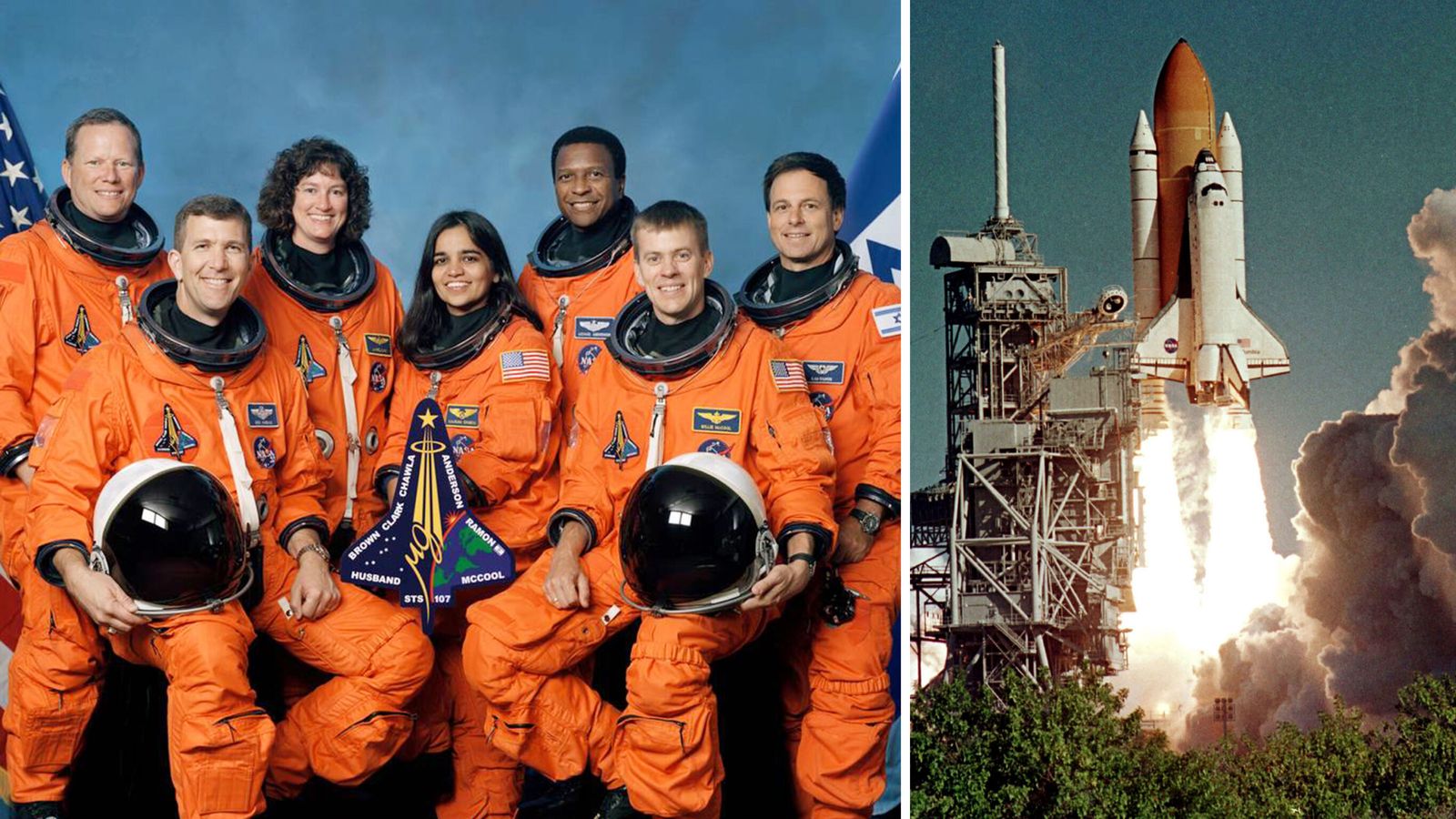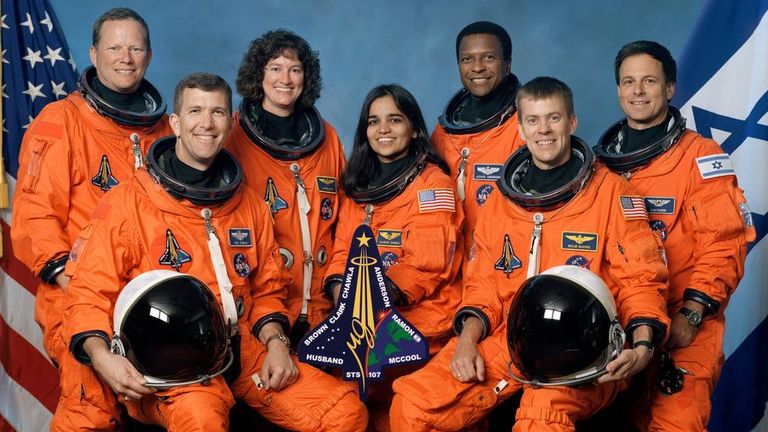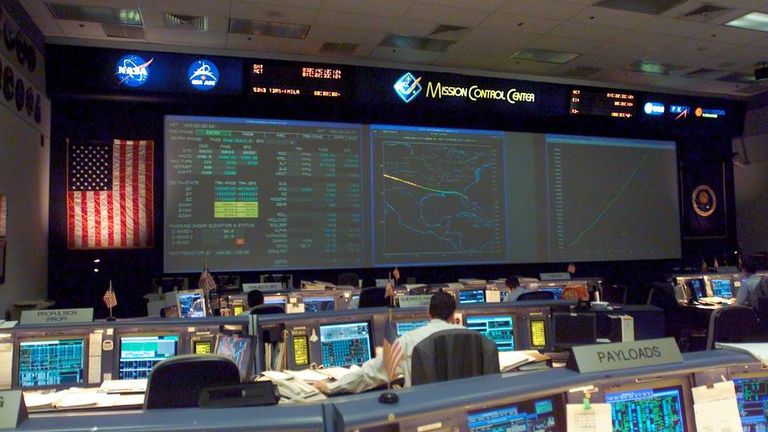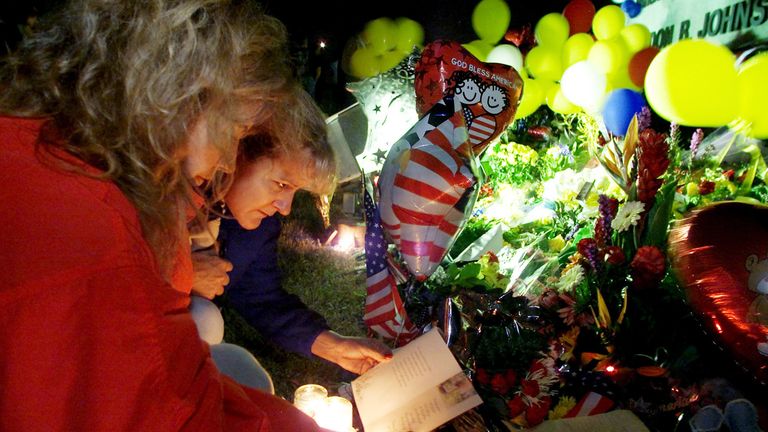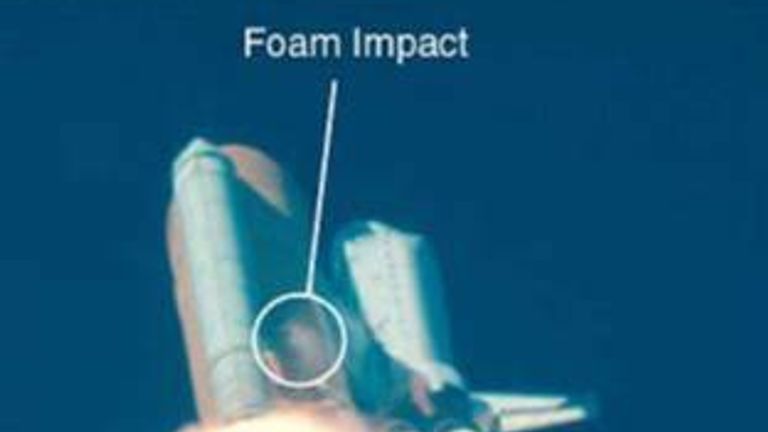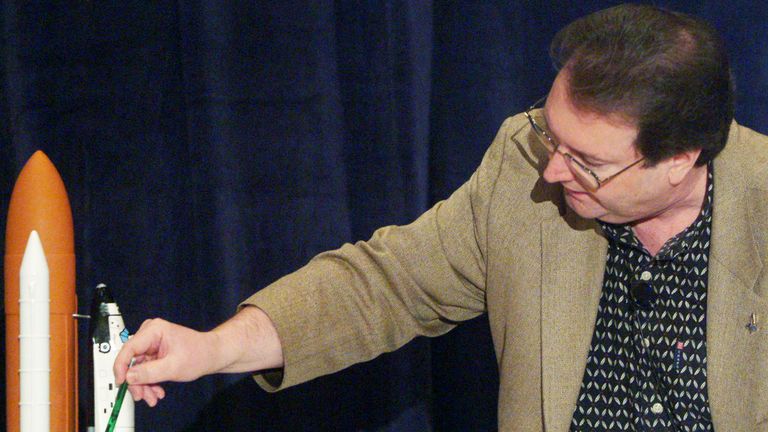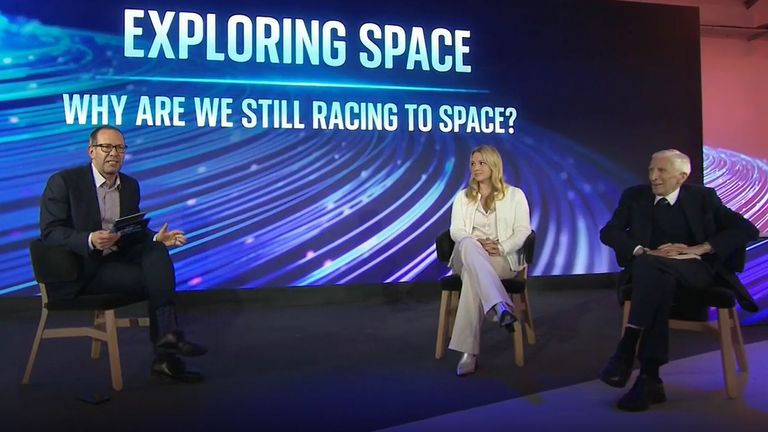Scott Hubbard remembers exactly where he was on the day of one of the deadliest tragedies in the history of space travel.
Before he stepped out of bed on the morning of 1 February 2003, a radio broadcast brought news that NASA’s Columbia space shuttle was “overdue” on its return to Earth.
“I had a feeling in the pit of my stomach that something had gone wrong,” he recalls.
The spacecraft, which had launched from Kennedy Space Center in Florida just over two weeks prior, with seven astronauts aboard, was scheduled to land that morning.
But the landing never came.
Columbia, which flew its maiden voyage back in April 1981, disintegrated over Texas 16 minutes before its planned Florida touchdown, killing its entire crew. They were commander Rick Husband; pilot William McCool; the mission specialists Michael Anderson, Laurel Clark, David Brown and Kalpana Chawla; and payload specialist Ilan Ramon, who was the first Israeli astronaut.
It marked the beginning of the end for America’s space shuttle programme, which had already endured the loss of seven astronauts in the Challenger disaster of 1986.
For Hubbard, a veteran of the US space agency who served as its first Mars programme director, Columbia changed his view of rocket launches forever.
“When that low-frequency rumble, that pressure wave hits you, you have a feeling of awe about the power that is being used to lift out of the gravity well of the Earth. But having had the Columbia experience, when I see a launch that has people on board, there’s that extra sense of anxiety: ‘Have I done everything possible to ensure mission success?'”
The call that changed everything
Before the loss of the crew was even confirmed, Hubbard received a call from the NASA administrator’s office asking him to represent the agency in an investigation into what happened.
The administrator at the time was Sean O’Keefe, who was with the families of the astronauts when it became clear something was wrong.
“The mood went from excitement and anticipation to despair, once it became evident that the shuttle wasn’t coming home,” he tells Sky News.
“Normally, you can set your watch as to when the shuttle will come through the atmosphere. Just like a launch day, we had a countdown clock, with these big numbers that would progressively roll downwards.
“It got to within about two minutes of 00 – usually before you see the shuttle, you hear two sonic booms as the shuttle passes the sound barrier, which tells you it’s about to land. Neither sonic boom showed up.”
The breakup of Columbia had already occurred, its wreckage raining down on Texas while the crew’s loved ones waited unawares at the Kennedy Space Center.
Not long later, the official investigation was launched.
Scott Hubbard was picked as the only NASA representative on the investigative board to work with Air Force generals, Navy admirals, and former US astronauts to paint a detailed picture of why Columbia ended in tragedy.
“I knew, if we were facing loss of the crew, that this would be having the same impact on the agency that the Challenger accident had years before,” he says.
“So I went into this with a determination to do whatever I could.”
‘The most difficult duty’
The Columbia investigation was expected to last 30 days. It ended up taking six months.
Beginning with seven-day work weeks from a base outside Johnson Space Center in Houston, Hubbard labels it the “most difficult duty” of his 20 years at NASA.
“The first part was the very sad search and recovery operation for the remains of the crew, so the families could have some closure,” he says. Remains for all seven astronauts were found.
Some 25,000 people were involved in efforts to collect pieces of the wreckage, O’Keefe recalls, which was strewn across a 200-mile swathe of land from Dallas to the Louisiana border.
Hubbard’s background in science and engineering saw him assigned to focus on the technical cause of the accident.
“Initially, it was circumstantial evidence,” recalls Hubbard.
“There was only one good, high-resolution image of this piece of foam falling off of the main tank and hitting the shuttle somewhere on its left wing, and then a spray of debris coming out.”
That incident had occurred not during re-entry, but after the launch on 16 January – 82 seconds into the flight.
Mission control notified the commander and pilot, who were assured that – because it had happened on previous missions too – there was no reason for alarm when it came to re-entry.
Proving the cause of the tragedy
But when Columbia re-entered the atmosphere, the damage to the wing let in “superheated gases” that led to the destruction of the wing and subsequent disintegration of the entire shuttle.
“Foam falling off had been happening since the very first flight of the shuttle, 30 years before,” says Hubbard.
“But while it was originally labelled an in-flight anomaly, which is the most serious of problems, it eventually became considered a turnaround issue, just a maintenance thing, and was demoted in its seriousness.
“We think this casual approach, to what was a serious issue, was one of the organisational causes of the accident.”
Due to a “sense of denial” among those who were interviewed during the investigation, Hubbard says he pushed for a test that would look to recreate the so-called anomaly, settling on a research facility in Texas used to simulate the impact of a bird striking parts of an aeroplane.
Over the course of months, it was configured to the specifications of what happened to Columbia.
The test was carried out on live TV on 7 July 2003 – and the result was beyond doubt.
“It caused two emotions in me simultaneously,” Hubbard recalls.
“One was ‘yes, we proved it’, and the other was, ‘oh my God, this is how these people died’.
“And that was… quite a moment.”
The legacy of Columbia
The Columbia Accident Investigation Board’s full report – which O’Keefe received 10 days before its publication in August 2003 – made 29 recommendations to improve the safety of future space shuttle flights, all of which were adopted by NASA.
They included that foam falling from the shuttle’s external tank during launch, as had been accepted as par for the course among NASA engineers, should no longer be allowed to happen.
The agency has not lost astronauts during spaceflight since.
“It was a hard-hitting report,” says O’Keefe. “Nothing was light about it. It was very critical, however, that’s what we needed to hear.”
Read more from Sky News:
Mars shines bright in night sky as it vanishes behind moon
Earth’s near miss with asteroid explained
NASA commemorates the victims of Columbia, as well as its other fallen astronauts, every January, with flowers laid and tributes read during a memorial service at Kennedy Space Center.
The site at Cape Canaveral has been a hub of excitement since November, when the launch of the Artemis mission kicked off NASA’s bid to return people to the moon for the first time in more than 50 years.
Space is also increasingly the playground of private enterprise, with the likes of SpaceX and Blue Origin setting themselves grand targets to go further than humans have before. A worthy venture, O’Keefe says, but – for all the wonder so many feel upon witnessing a launch – never one that should see people lose sight of the risk.
“The nature of it just scared me every single time,” he admits. “Everybody who talked about shuttle launches that are ‘routine’ – there is no such thing. Every one of them is an opportunity for disaster, and that’s the nature of it.
“But over the course of human history, we have done things that are inherently dangerous because our curiosity gets the better of us.”
For Hubbard, who became chairman of SpaceX’s safety panel in 2012, with Elon Musk among those receiving his advice, the lessons learned from Columbia are only growing in importance.
“Space is a hard thing to do, launching humans into space is difficult, and we have been fortunate that thus far there have been relatively few disasters,” he tells Sky News. (NASA has lost 15 astronauts during spaceflight: seven in Columbia and Challenger, and one, Michael Adams, in a sub-orbital flight in 1967.)
Hubbard says the experience of Columbia “profoundly changed” his view of human exploration of space, but our collective ambition to go further, faster, is only going one way.
“Any rocket you send up there, you can’t say with any certainty it’s going to be just fine,” says O’Keefe. “But the alternative is: ‘let’s not go?’ And the answer is, you can’t relent to that.”
